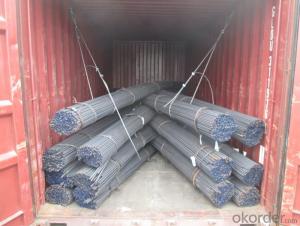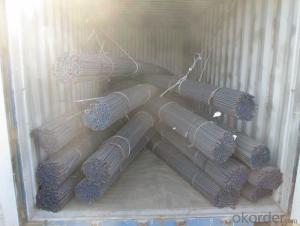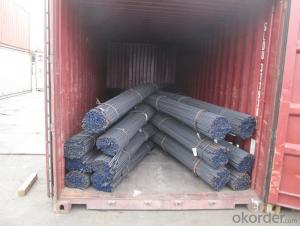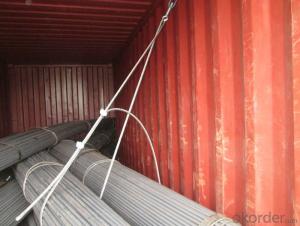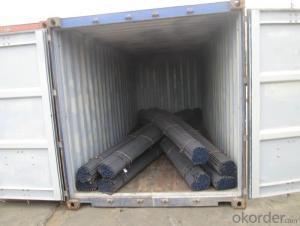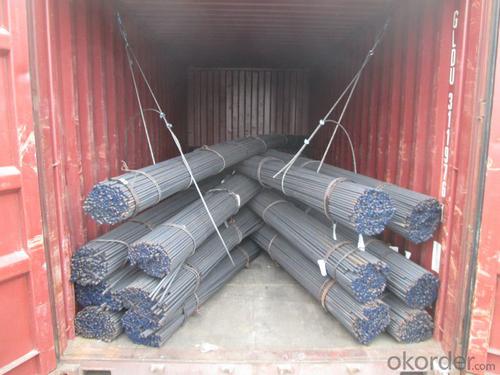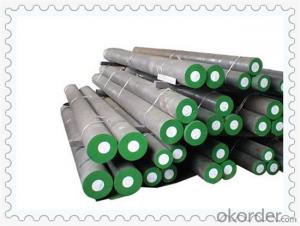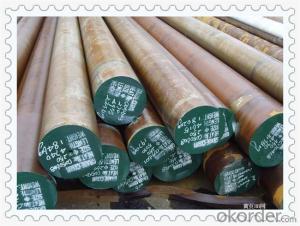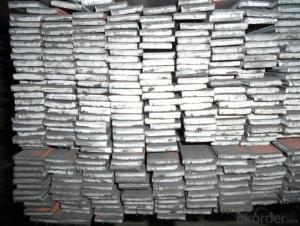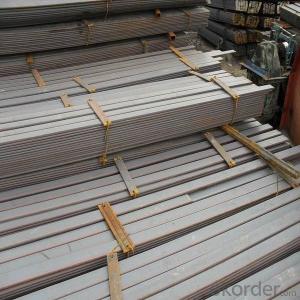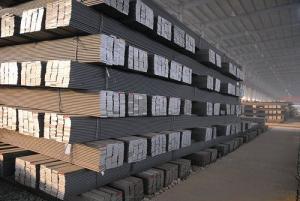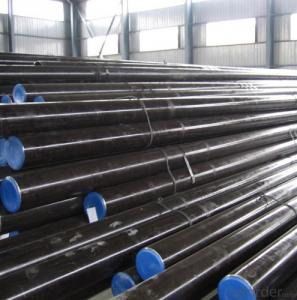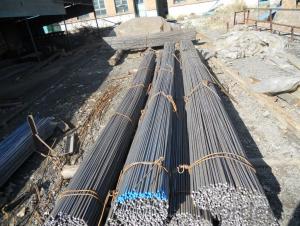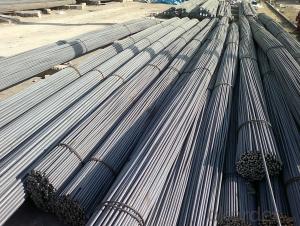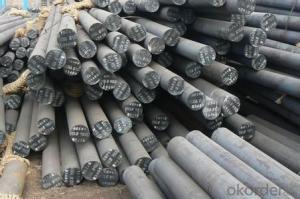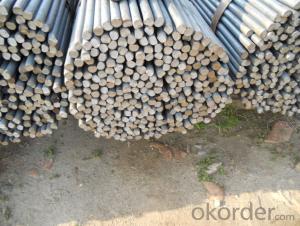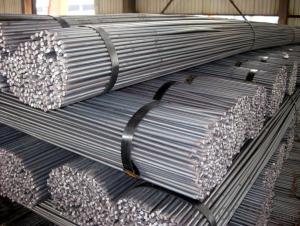JIS G3101 SS400 Spring Steel Bar with high quality
- Loading Port:
- Tianjin
- Payment Terms:
- TT or LC
- Min Order Qty:
- 25 m.t
- Supply Capability:
- 10000 m.t/month
OKorder Service Pledge
OKorder Financial Service
You Might Also Like
Specification
Product Description:
OKorder is offering Spring Steel Bar with high quality at great prices with worldwide shipping. Our supplier is a world-class manufacturer of steel, with our products utilized the world over. OKorder annually supplies products to European, North American and Asian markets. We provide quotations within 24 hours of receiving an inquiry and guarantee competitive prices.
Product Applications:
Spring Steel Bar with high quality are ideal for structural applications and are widely used in the construction of buildings and bridges, and the manufacturing, petrochemical, and transportation industries.
Product Advantages:
OKorder's Spring Steel Bar with high quality are durable, strong, and resist corrosion.
Main Product Features:
· Premium quality
· Prompt delivery & seaworthy packing (30 days after receiving deposit)
· Corrosion resistance
· Can be recycled and reused
· Mill test certification
· Professional Service
· Competitive pricing
Product Description:
Spring Steel can be divided into two types. One is carbon spring steel, and other one is alloy spring steel.
Alloy spring steel is based on carbon spring steel, by adding one or more alloying elements to improve the mechanical properties, hardenability and other properties to meet the requirement for manufacture all kinds of spring steel.
Specification of Spring Steel Bar:
-Material: SUP6
-Standard: JIS
-Production: Hot rolled or cold rolled
-Type: Spring Steel
-Alloy or no: Alloy
-Micro Structure: Tempered troostite
Mechanical Properties:
-Tensile Strength σb (MPa): ≥1274 (130)
-Yield Strength σs (MPa): ≥1176 (120)
-Elongation δ10(%): ≥5
-Percentage reduction of area: ψ (%): ≥25
-Hardness:
1, Hot rolled, ≤321HB
2, Cold drawn + Heat treatment: ≤321HB
Usage/Applications of Spring Steel Bar:
-This is silicon-manganese spring steel that is used widely. Its strength, elasticity and hardenability are little higher than 55Si2Mn.
- Products of this material are used as flat spring o spiral spring with diameter less than 30mm that bear a large load during the fabrication of trains, cars and tractors.
-The principal material of valve spring.
Packaging & Delivery of Spring Steel Bar:
-Packing Detail: The products can be packed in bundles by steel wires.
-Marks: We will make color marks to make sure that it’s more convenient for customers to distinguish their products from other products at the destination port and we will tie tag marks up to each bundle to make sure that customers know the specifications of each bundle like product’s name and size and other information of products.
-Delivery Detail:
1, Delivery time: 30~45 working days after receive buyer’s T.T. or L/C.
2, Delivery status should be written in the contract. (Heat treatment or no)
Transportation:
1, The products can be delivered by bulk vessel or by container. As for container, products with the length of 6m will be loaded in 20’ container, with 9m or 12m, in 40’ container.
2, The maximum quantity of loading of container is 25 tons.
3, The products are usually transported to the nearest port from the production place.
FAQ:
Q1: Why buy Materials & Equipment from OKorder.com?
A1: All products offered byOKorder.com are carefully selected from China's most reliable manufacturing enterprises. Through its ISO certifications, OKorder.com adheres to the highest standards and a commitment to supply chain safety and customer satisfaction.
Q2: How do we guarantee the quality of our products?
A2: We have established an advanced quality management system which conducts strict quality tests at every step, from raw materials to the final product. At the same time, we provide extensive follow-up service assurances as required.
Q3: The products are invoicing on theoritical weight or on actual weight?
A3: We can do it in both manners, according to the customers' request.
Image:
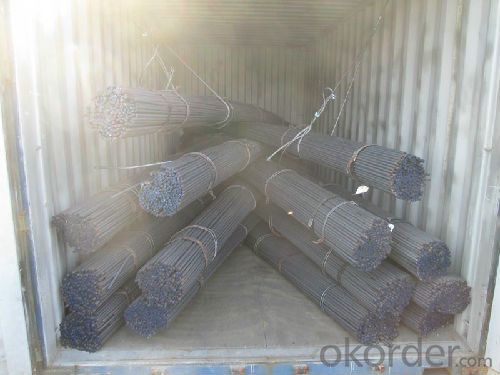
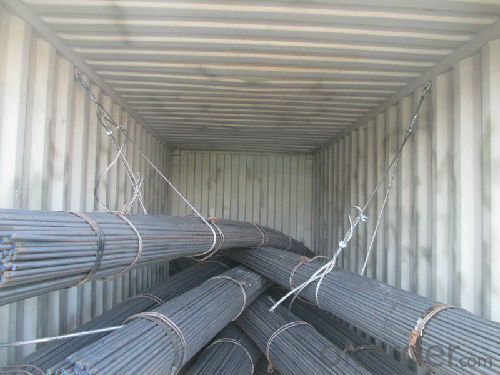
- Q: What are the different types of steel round bars used in the power generation industry?
- In the power generation industry, there are various types of steel round bars utilized depending on specific requirements. Some common types include carbon steel round bars, stainless steel round bars, and alloy steel round bars. Carbon steel round bars are often used for their high strength and durability, while stainless steel round bars are favored for their corrosion resistance. Alloy steel round bars, on the other hand, offer a combination of strength, toughness, and heat resistance, making them suitable for demanding power generation applications.
- Q: Can steel round bars be used for making agricultural equipment or machinery?
- Yes, steel round bars can be used for making agricultural equipment or machinery. Steel is a commonly used material in the construction of such equipment due to its high strength, durability, and resistance to wear and tear. Steel round bars can be used to manufacture components like axles, shafts, handles, and structural supports, providing the necessary strength and reliability required for agricultural applications.
- Q: What is the yield strength of a steel round bar?
- The yield strength of a steel round bar refers to the amount of stress or force that the bar can withstand before it starts to deform or permanently change shape. This is an important property to consider when designing or selecting materials for structural applications. The yield strength of a steel round bar can vary depending on the specific grade or type of steel being used. Common grades of steel such as A36, 1018, and 4140 typically have yield strengths ranging from 36,000 psi (pounds per square inch) to 100,000 psi. However, it is important to note that the yield strength can also be influenced by factors such as heat treatment, manufacturing processes, and the presence of any alloying elements in the steel composition. Therefore, it is always recommended to consult the specific material specifications or conduct proper testing to determine the exact yield strength of a steel round bar in a given application.
- Q: What is the maximum length of a steel round bar that can be manufactured?
- The maximum length of a steel round bar that can be manufactured is dependent on various factors such as the manufacturing capabilities, equipment, and transportation limitations. However, in general, steel round bars can be manufactured in lengths ranging from a few meters to up to 12 meters or more.
- Q: What are the advantages of using nickel-zinc alloy steel round bars?
- There are several advantages to using nickel-zinc alloy steel round bars. Firstly, they offer excellent corrosion resistance, making them ideal for applications in harsh environments or where exposure to moisture is a concern. Secondly, these round bars exhibit high strength and toughness, making them suitable for heavy-duty applications that require a reliable and durable material. Additionally, nickel-zinc alloy steel round bars have good heat resistance, allowing them to withstand elevated temperatures without significant deformation or loss of mechanical properties. Overall, these advantages make nickel-zinc alloy steel round bars a versatile and reliable choice for various industrial and construction applications.
- Q: What are the different surface treatments available for steel round bars?
- There are several different surface treatments available for steel round bars, each designed to enhance the material's properties and improve its overall performance. Some common surface treatments for steel round bars include: 1. Hot-dip galvanizing: This process involves immersing the steel round bars in a bath of molten zinc, forming a protective coating on the surface. Hot-dip galvanizing provides excellent corrosion resistance, making it suitable for outdoor applications or environments where the steel is exposed to moisture. 2. Electroplating: Electroplating is the process of depositing a thin layer of metal onto the surface of the steel round bars using an electric current. This treatment can provide enhanced corrosion resistance, improved appearance, or specific functional properties, depending on the metal used for electroplating. 3. Powder coating: Powder coating involves applying a dry powder paint to the surface of the steel round bars, which is then cured by heat to form a protective and decorative coating. This treatment offers excellent durability, resistance to corrosion, and a wide range of color options. 4. Black oxide coating: Black oxide coating is a chemical treatment that creates a dark, matte finish on the surface of the steel round bars. It provides moderate corrosion resistance and enhances the material's appearance, making it suitable for decorative or non-reflective applications. 5. Chrome plating: Chrome plating is a process of electroplating a thin layer of chromium onto the surface of the steel round bars. This treatment enhances corrosion resistance, improves wear resistance, and provides a shiny, reflective finish. 6. Nitriding: Nitriding is a heat treatment process that diffuses nitrogen into the surface of the steel round bars, forming a hardened layer. This treatment improves the material's hardness, wear resistance, and fatigue strength, making it suitable for applications requiring high strength and durability. 7. Anodizing: Anodizing is commonly used for aluminum, but it can also be applied to steel round bars. This electrolytic process creates a protective oxide layer on the surface, enhancing corrosion resistance and providing a decorative and durable finish. These are just a few examples of the different surface treatments available for steel round bars. The choice of treatment depends on the specific requirements of the application, such as corrosion resistance, wear resistance, appearance, or functional properties needed.
- Q: Can steel round bars be used in the food processing industry?
- No, steel round bars are not typically used in the food processing industry as they can potentially contaminate the food due to their composition and surface characteristics. Food-grade materials such as stainless steel are preferred for their corrosion resistance and hygienic properties in order to maintain the integrity and safety of the food being processed.
- Q: How do steel round bars compare to carbon fiber round bars?
- Steel round bars and carbon fiber round bars are two different materials commonly used in various industries. Here is how they compare: Strength and Durability: Steel round bars are known for their exceptional strength and durability. They can withstand heavy loads, high temperatures, and harsh environments. Carbon fiber round bars, on the other hand, are also strong but are generally not as strong as steel bars. However, carbon fiber bars excel in terms of strength-to-weight ratio, making them a popular choice for applications where weight reduction is crucial. Weight: Steel round bars are significantly heavier than carbon fiber round bars. This weight difference often makes carbon fiber bars preferable in industries where weight reduction is important, such as aerospace and automotive sectors. Lighter bars can contribute to improved fuel efficiency, increased speed, and enhanced maneuverability. Corrosion Resistance: Steel round bars are prone to corrosion, especially when exposed to moisture and certain chemicals. Regular maintenance and protective coatings are often required to prevent rusting. On the other hand, carbon fiber round bars are inherently corrosion-resistant. This property makes carbon fiber bars valuable in environments where corrosion can be a concern, such as marine applications. Flexibility and Stiffness: Steel round bars are generally stiffer and less flexible compared to carbon fiber round bars. This characteristic can be advantageous in applications where rigidity and structural integrity are crucial, such as construction and heavy machinery. Carbon fiber round bars, on the other hand, offer higher flexibility and can be engineered to have different levels of stiffness, making them suitable for applications that require vibration damping or enhanced shock absorption. Cost: Steel round bars are generally more cost-effective compared to carbon fiber round bars. Steel is a widely available material, and its production costs are relatively low. Carbon fiber, on the other hand, is more expensive to produce due to the complex manufacturing process and the cost of raw materials. As a result, carbon fiber round bars tend to be pricier, limiting their use to industries where their unique properties justify the increased costs. In conclusion, steel round bars and carbon fiber round bars have their own advantages and disadvantages. Steel bars offer exceptional strength, durability, and cost-effectiveness, while carbon fiber bars excel in terms of weight reduction, corrosion resistance, flexibility, and stiffness. The choice between the two depends on the specific requirements of the application, including factors such as load-bearing capacity, weight reduction, corrosion resistance, and cost considerations.
- Q: What are the different bending methods for steel round bars?
- There are several different bending methods that can be used for steel round bars, depending on the desired outcome and the specific application. Some of the most common bending methods for steel round bars include: 1. Cold Bending: This method involves bending the steel round bars at room temperature without the use of heat. Cold bending is typically performed using specialized bending machines or tools that apply force to the bar to achieve the desired shape. 2. Heat Bending: Heat bending involves heating the steel round bar to a specific temperature to make it more malleable and easier to bend. Once heated, the bar is bent using specialized tools or fixtures. Heat bending is often used for more intricate or precise bends that cannot be achieved through cold bending alone. 3. Induction Bending: Induction bending is a process that uses an induction coil to heat the steel round bar locally, allowing it to be bent gradually and smoothly. This method is commonly used for large diameter or thick-walled round bars, as it provides greater control over the bending process and minimizes distortion or damage to the material. 4. Roll Bending: Roll bending involves passing the steel round bar between a set of rollers that gradually bend it into the desired shape. This method is often used for larger diameter or longer round bars, as the rollers provide continuous support and ensure consistent bending across the entire length of the bar. 5. Mandrel Bending: Mandrel bending is a technique that uses a mandrel, or a rod inserted inside the steel round bar, to support the inner walls during the bending process. By using a mandrel, the bar maintains its shape and prevents the formation of wrinkles or deformations on the inside of the bend. Each bending method has its own advantages and limitations, and the choice of method will depend on factors such as the size and thickness of the round bar, the required bend radius, and the desired quality of the final product. It is important to consult with experts or professionals in the field to determine the most suitable bending method for a specific steel round bar application.
- Q: How are steel round bars tested for quality and compliance?
- Steel round bars are tested for quality and compliance through a series of rigorous tests and inspections to ensure they meet the required standards and specifications. One of the most common tests used is the tensile test, which measures the bar's ability to withstand pulling forces. This test involves stretching the bar until it breaks and analyzing the stress-strain curve to determine its mechanical properties, such as yield strength, ultimate tensile strength, and elongation. Another important test is the hardness test, which measures the resistance of the bar's surface to indentation. This test helps determine the material's strength and its ability to resist wear and deformation. Chemical analysis is also conducted to verify the composition of the steel round bars. This test determines the percentage of elements present in the steel, such as carbon, manganese, silicon, sulfur, and phosphorus. It ensures that the steel is made according to the required specifications and is suitable for the intended application. Dimensional inspection is crucial to ensure that the steel round bars meet the specified dimensions and tolerances. This involves measuring the length, diameter, and straightness of the bars using calibrated instruments. Surface quality is assessed through visual inspection and non-destructive testing methods, such as ultrasonic testing and magnetic particle inspection. These tests detect any surface defects, cracks, or discontinuities that may affect the bar's performance and integrity. In addition to these tests, steel round bars may undergo other specialized tests based on their intended application. For example, bars used in the construction industry may be subjected to corrosion resistance or impact testing. Overall, the quality and compliance of steel round bars are ensured through a comprehensive range of tests, inspections, and analyses. These tests help manufacturers and customers determine the suitability and reliability of the bars for specific applications, ensuring the safety and effectiveness of the final products.
Send your message to us
JIS G3101 SS400 Spring Steel Bar with high quality
- Loading Port:
- Tianjin
- Payment Terms:
- TT or LC
- Min Order Qty:
- 25 m.t
- Supply Capability:
- 10000 m.t/month
OKorder Service Pledge
OKorder Financial Service
Similar products
Hot products
Hot Searches
Related keywords
